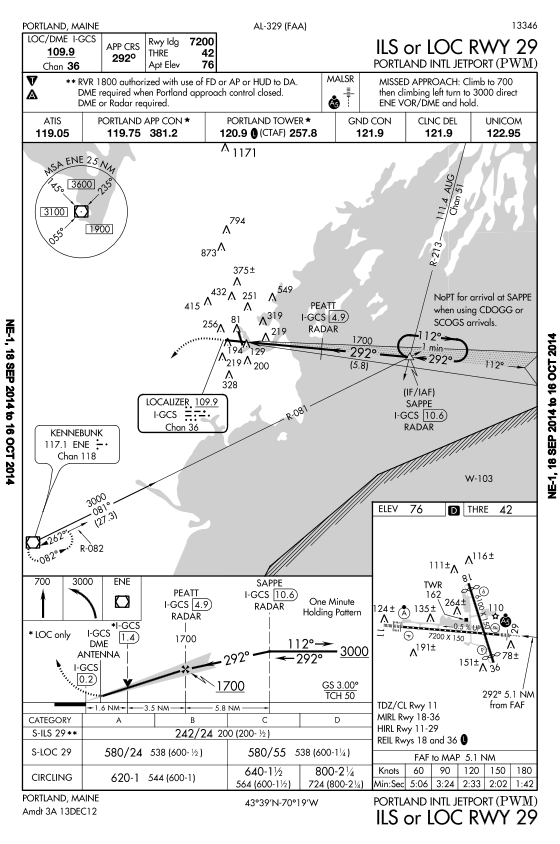The instrument approach provides a method to descend and land safely in low visibility conditions. Instrument approach procedures are designed in a standard way according to the United States standard for terminal instrument approach procedures, or TERPs. Several government and corporate entities are involved in the production of approach procedures. A procedure is established by the FAA only after analyses of obstructions, terrain, and available navaids.
Instrument approaches fall into two categories: precision and non-precision. A precision approach is one that provides lateral and vertical guidance, whereas a non-precision approach provides lateral guidance only.
Approach Charts Overview
US military approach procedures are established and published by the Department of Defense and are available to the public. Approach charts have six sections, which are the margin, pilot briefing, plan view, profile view, landing minimums, and the airport diagram.
Charts are organized by city, then by airport name and state.
Margin Identification
The top margin contains the airport's city and state location on the left. In the center the chart reference number and approving authority are given. The procedure title, airport name, and three letter identifier are given in the upper right corner.
The bottom margin restates the airport's city and state location on the left, along with the chart amendment number and date. The date may be given in either day, month, and year format or Julian format. If Julian format is used, the two digit year is given first, followed by the day of year. For example, "14256" means the 256th day of 2014.
The airport's latitude and longitude are given bottom center. The airport name, three letter identifier, and procedure title are restated bottom right.
The procedure's title is based on the type of navigational facility providing final approach course guidance. If straight in minimums exist for a runway from the approach, that runway is included in the title. Straight in minimums are designated when the final approach course is aligned within 30 degrees of the runway centerline.
When the approach is not aligned with any runway, only circling minimums exist for the approach procedure. In this case, a letter is used in the title of the approach, "VOR-A", for example. The letter A tells you this is the first approach of this type for this airport. If there was a second VOR approach to our example airport with circling only minimums, it would be designated as the "VOR-B" approach. Lettering continues in alphabetical order.
Letters at the end of the alphabet are used when there are multiple approaches to the same runway using the same guidance, "ILS Z 27", for example. Such approaches may also be titled using a number or other term to distinguish them, such as "ILS 2 27" or "BRIDGE ILS 27".
If a slash is included in the title, such as "VOR/DME", it means both type of navigational equipment are required for the approach. In this case, you would need VOR and DME equipment to use the approach procedure. If "or" is placed in the title, such as in "VOR or GPS", it means either type of navigational equipment may be used.
